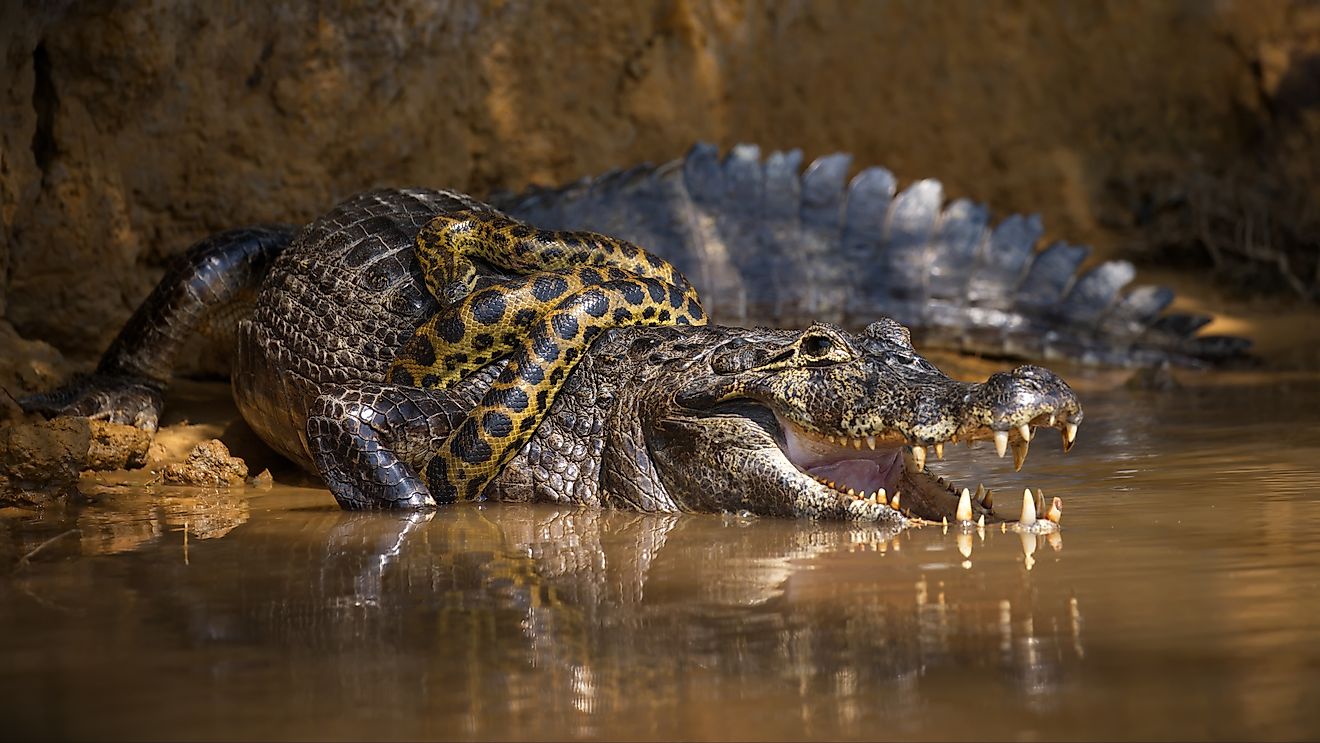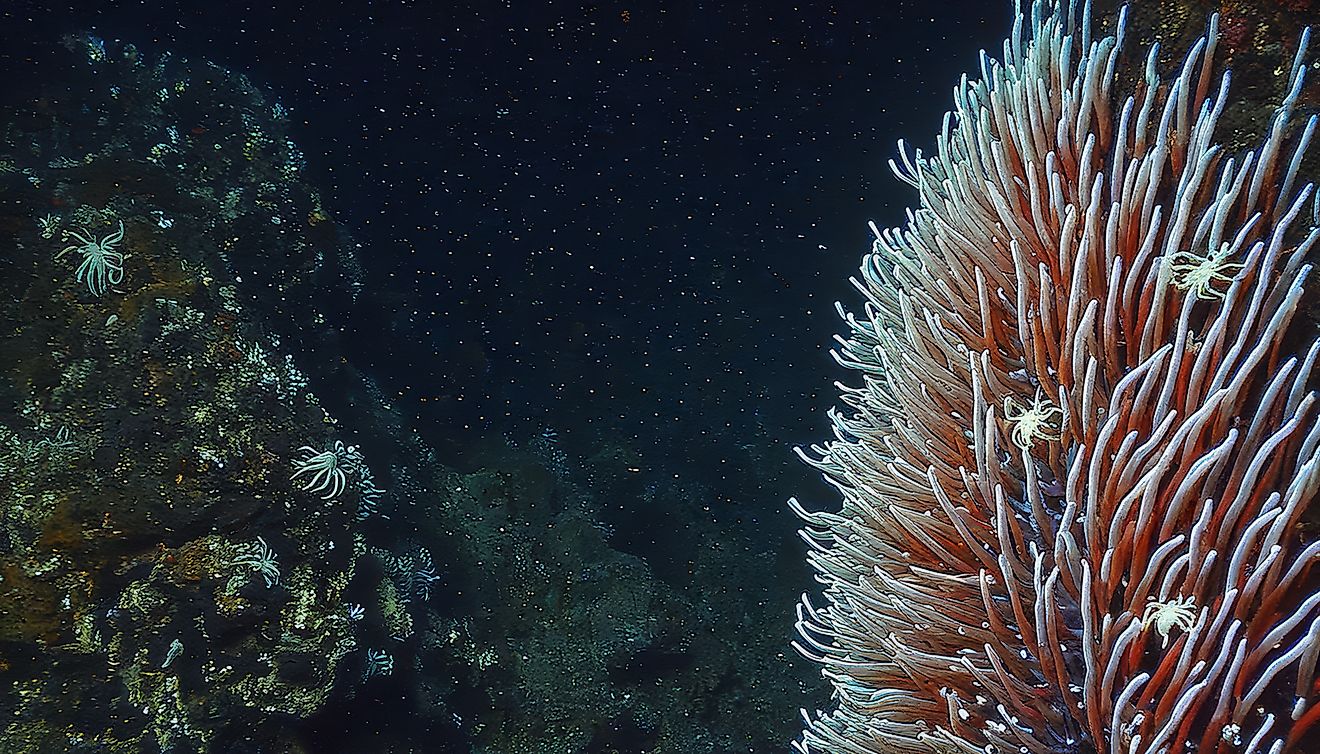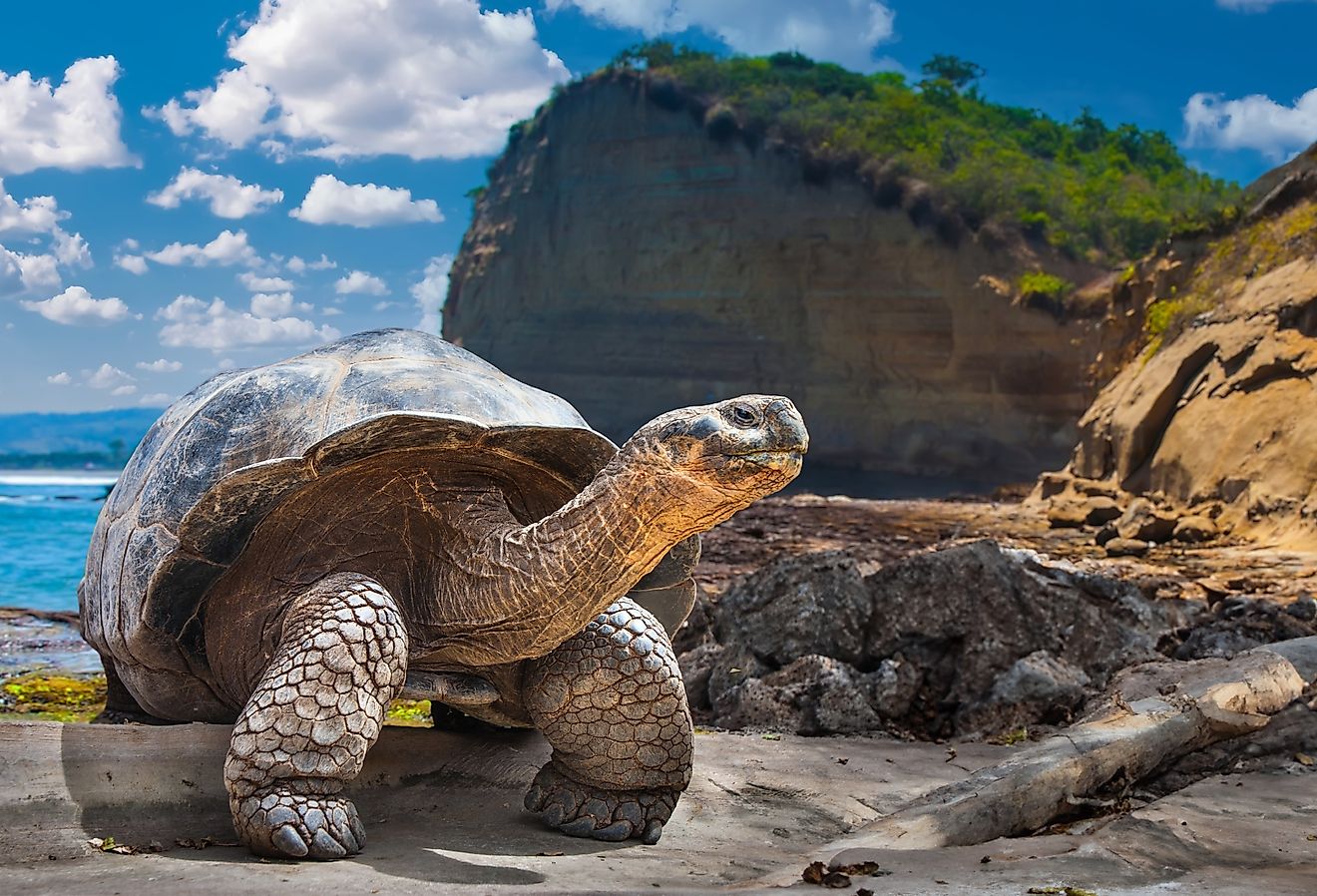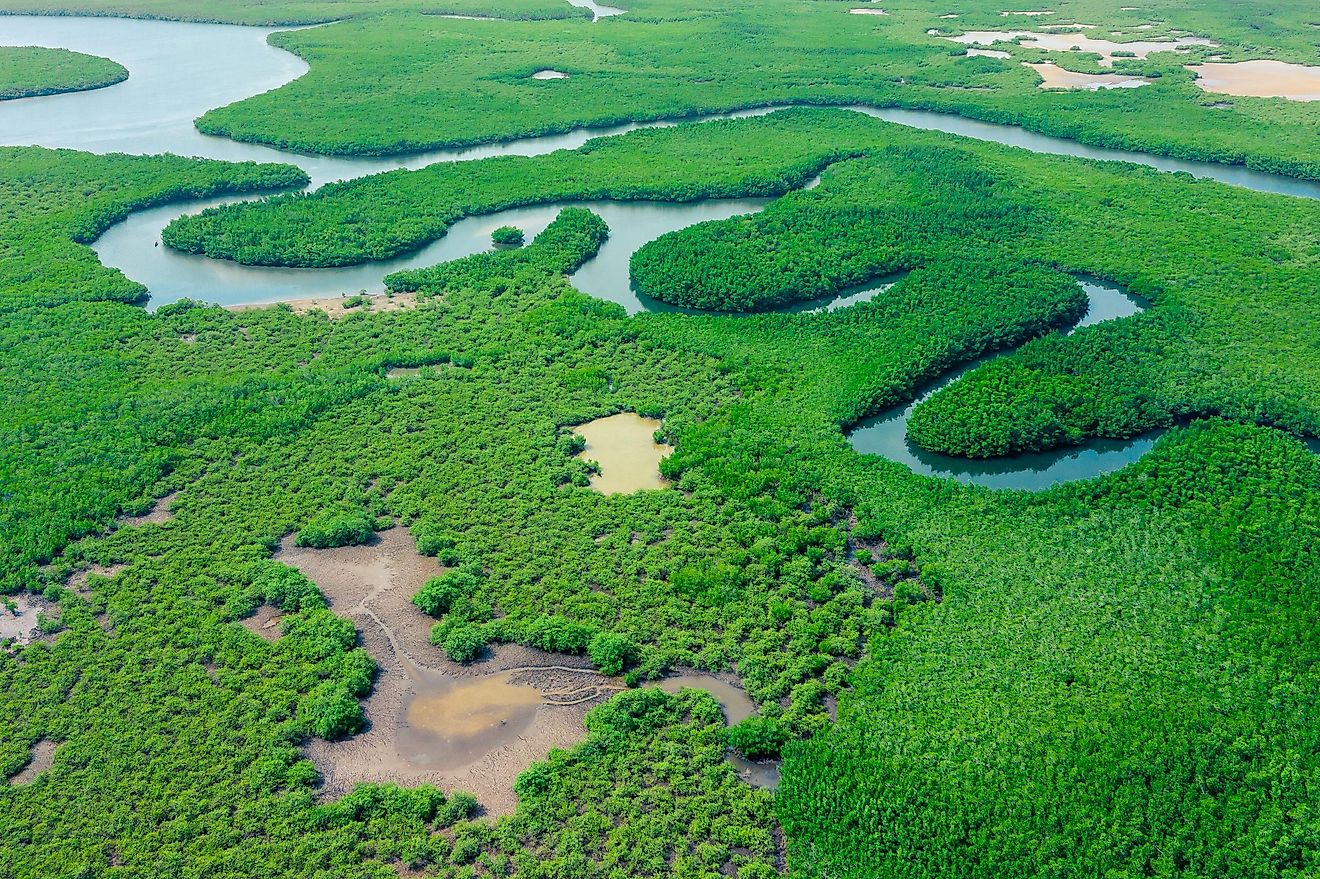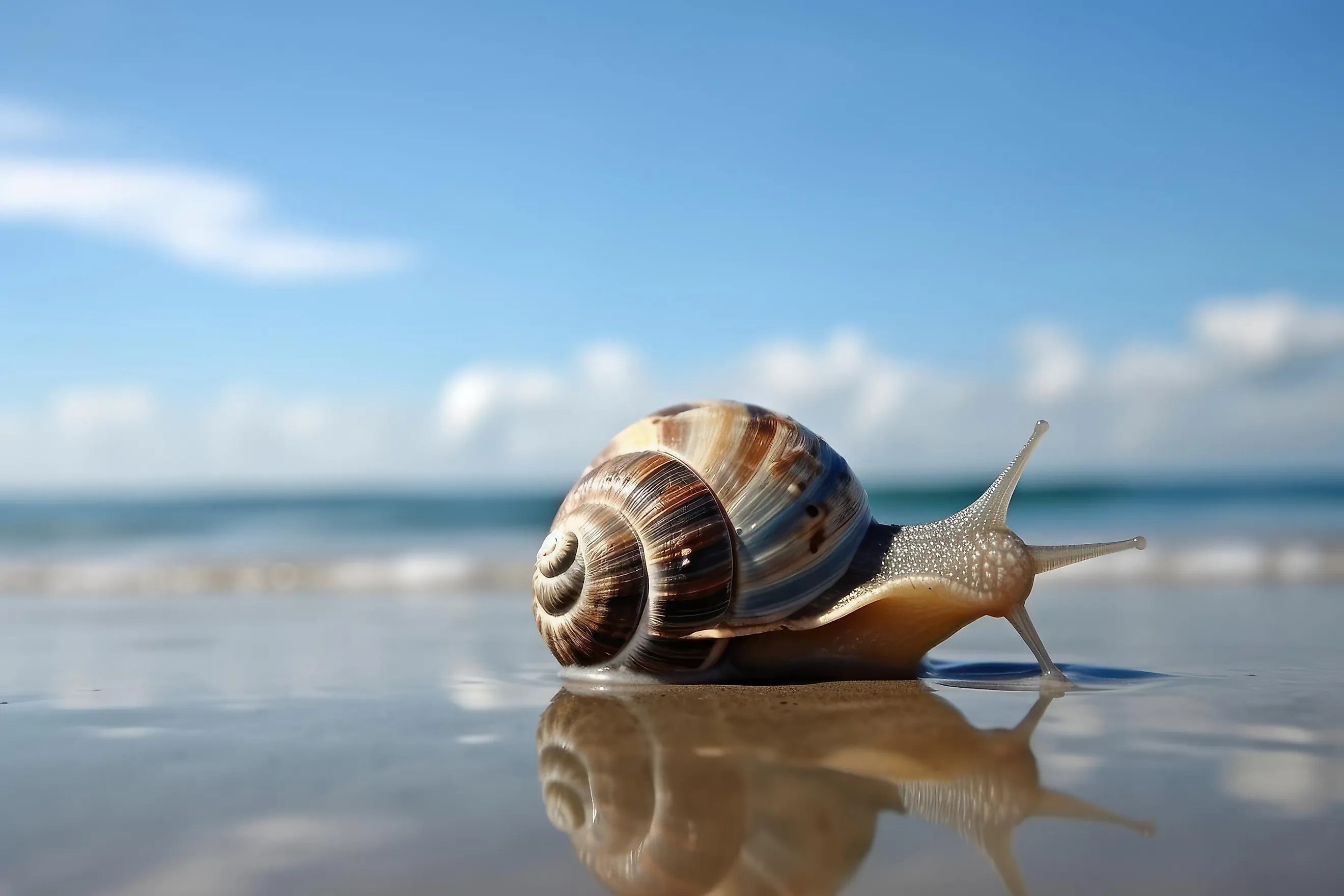
Sea Snail
Sea snails are a diverse and large group of slow-moving marine mollusks with visible external shells such as abalone or whelk. Some interesting facts about these remarkable creatures found in oceans all over the world include their abilities to produce venom, captivating shells, and special feeding adaptations, which vary from one species to another. Sea snails share the same taxonomic group as slugs which differ from snails due to the absence of a visible shell. Other unique characteristics include their very diverse food habits, with certain species being able to live on land and in saltwater or freshwater. Sea snails have strong and durable shells, serving as great fossil records. Here are some more interesting details about sea snails.
Taxonomic Classification
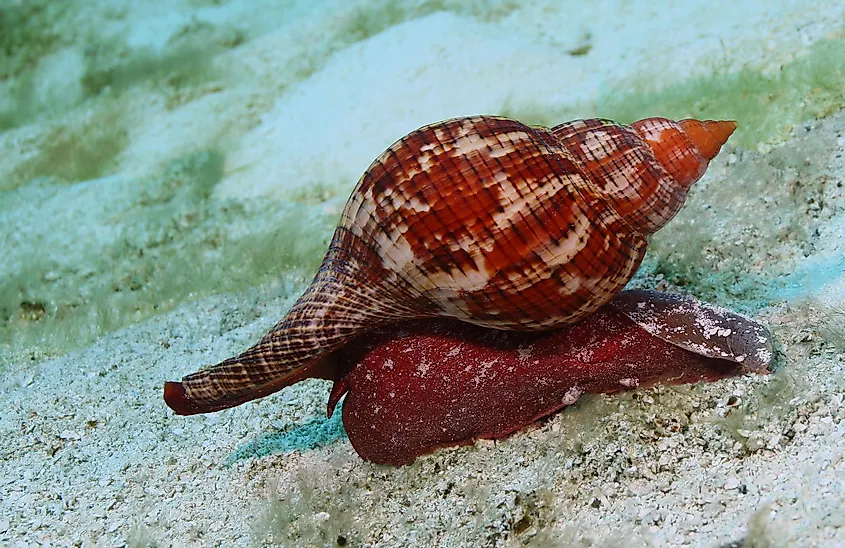
Taxonomic classification of sea snails is an ongoing scientific endeavor. Sea snails occur in a variety of shapes, sizes, and colors and are classified under the taxonomic kingdom "Animalia," phylum "Mollusca," and class "Gastropoda" along with other types of snails such as land snails and freshwater snails. Gastropods include species such as periwinkles, abalone, whelks, conches, cowries, limpets, and many more sea snails that have coiled seashells in the adult stage. In the cowries, the coiling is barely visible, while in limpets, the coiling is visible in the larval stage only.
A basic hierarchical system of class, subclass, order, family, genus, and species provides a basic framework for categorizing the diversity of sea snails within the Gastropoda class.
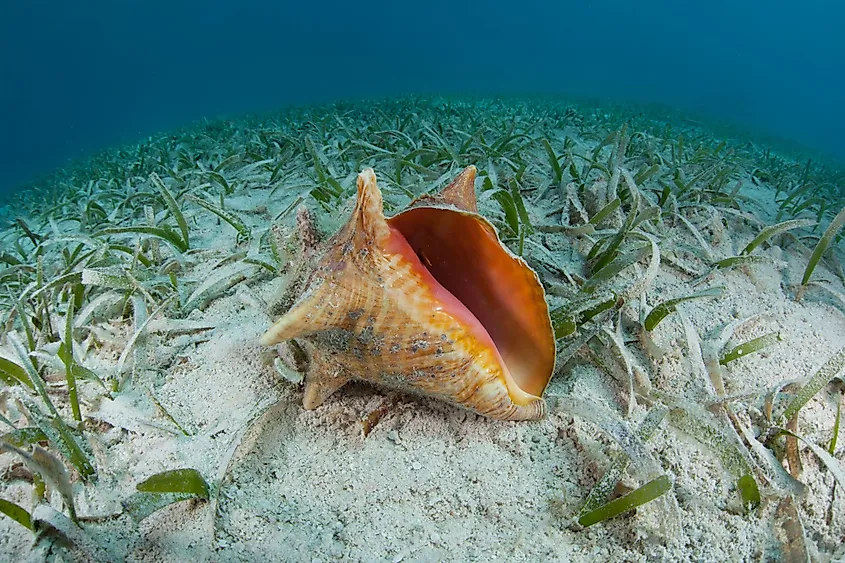
Class – Gastropoda
The highest taxonomic rank after kingdom and phylum covering snails and slugs. Gastropods have a single, coiled shell (in most species) and a muscular foot.
Subclass – Caenogastropoda (Prosobranchia)
The subclass "Prosobranchia," more recently called "Caenogastropoda," includes marine gastropods with gills located towards the front. In most cases, they have shells that coil in a clockwise direction. This subclass covers 60% of all living gastropods with families of shelled mollusks, including periwinkles, whelks, limpets, moon snails, cone snails, and turrids, amongst many others.
Examples of other subclasses are Neomphaliones (deep sea snails/limpets), Neritimorpha (land snails, sea snails, slugs, some deepwater limpets, freshwater snails), Vetigastropoda (sea snails, marine gastropod mollusks), and Patellogastropoda (true limpets).
Order – Examples: Neogastropoda, Archaeogastropoda, Littorinimorpha
Within a subclass, sea snails are further classified into different orders, such as Neogastropoda (sea snails, freshwater/marine gastropod mollusks), Archaeogastropoda (snails, sea snails, slugs), Littorinimorpha (sea snails, some freshwater/terrestrial snails), etc., based on various anatomical and ecological characteristics.
Family – Examples: Naticidae, Turbinidae, Conidae, Neritidae
Orders are further divided into families such as Naticidae (moon snails), Turbinidae (turban snails), and Conidae (cone snails), among many more, which consist of related genera.
Genus (plural genera) and species
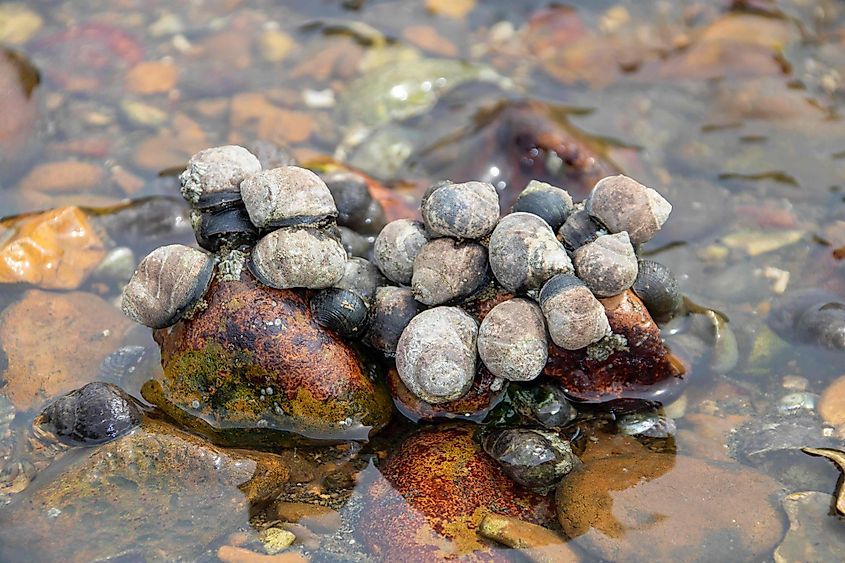
Genus and species are the binomial names that determine the exact taxonomic classification of an organism. For example, Littorina littorea is the "common periwinkle" sea snail belonging to the genus "Littorina" and the species "littorea."
The common periwinkle (Littorina littorea) belongs to subclass "Caenogastropoda," order "Littorinimorpha," and family "Littorinidae." Another example is the species of medium to small-sized sea snails called Nerita peloronta. It belongs to the subclass "Neritimorpha", order "Cycloneritida," and family "Neritidae."
Range And Habitat
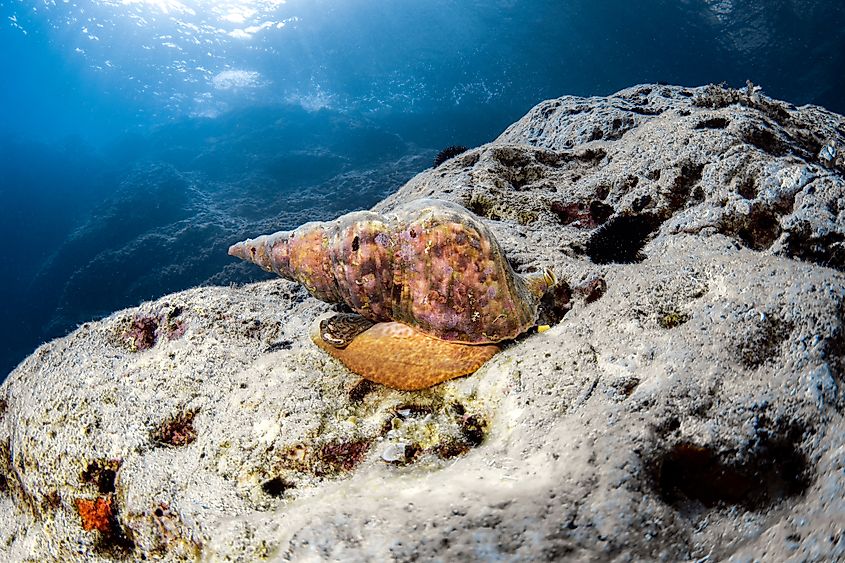
As marine organisms, sea snails are mainly found in ocean environments, although some species are adapted to freshwater and brackish water habitats. They adapt to various ecological niches around the world, spanning coastal areas to deep-sea regions. They can be found in salt marshes, and, more often, in shallow coastal water, often seen in intertidal zones clinging to rocks, algae, and other substrates where the tides expose them to both water and air.
Deep sea snails can be found at depths ranging from 200 to 1,000 meters and up to 4,000 meters deep. Some species of sea snails are found around coral reefs attaching themselves to underwater surfaces like rocks and plants. They might also bury themselves on the sandy ocean floor while feeding on their favorite food. Sea snails living in deep-sea environments are faced with low temperatures, high pressures, and limited food resources, but these species have specialized adaptations showing some unique characteristics.
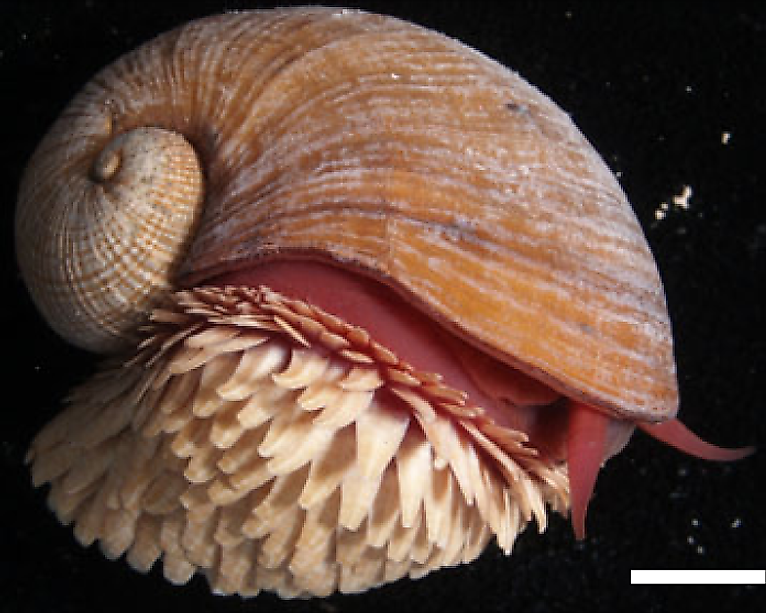
Some extremophile species, such as the scaly-foot snail (Chrysomallon squamiferum), also called sea pangolin, have even adapted to extreme temperatures such as hydrothermal vents and cold seeps where the high temperatures, toxic chemicals, and dark environments present a new set of challenges and yet, these organisms tolerate the harsh environment often forming symbiotic relationships with chemosynthetic bacteria to thrive.
Food Habits
Most species of sea snails are herbivores feeding on sea plants such as algae, seaweed, and other plant matter, while some species are carnivores feeding on other smaller mollusks, mussels, clams, snails, slugs, worms, and fish. The omnivorous species eat almost everything from plant matter to other smaller living sea creatures, while the detritivore species feed on dead organic material (fish or slug carcasses) or a mixture of plant and organic material. Snails can sense rotting carcasses and feed on them for hours at a time. Snails that inhabit a scavenger-oriented niche will hunt their food. Therefore, based on the species and types of sea snails, their food ranges from algae (plant matter) to plankton (a diverse group of microscopic organisms) to other sea organisms (smaller animals) and detritus (dead decomposing organic matter).
Physical Description, Behavior, And Reproduction
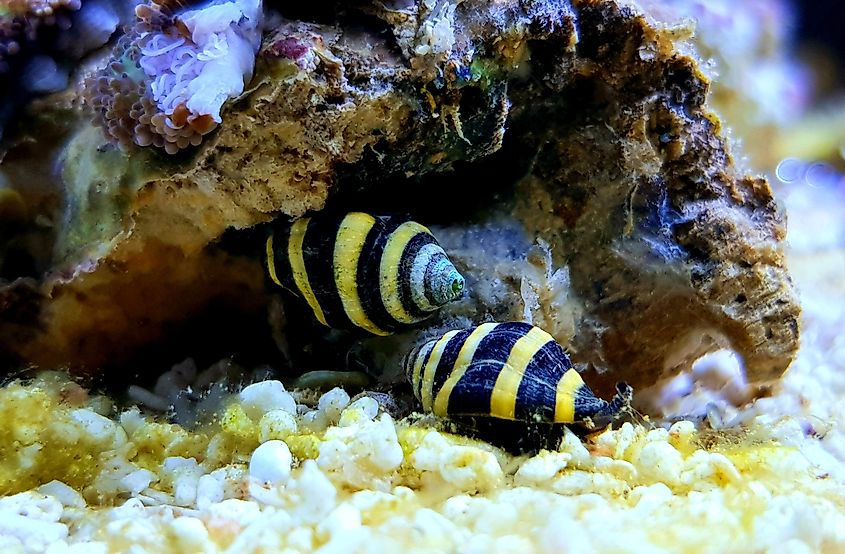
A sea snail does not have a backbone but has a soft body and a shell such as a whelk or an abalone as their protective outer covering. The most attractive part of a sea snail is its shell, with most shells being spirally coiled and some having a conical shape, such as the impetus. The shells make it difficult to prey on them. Shells are made from calcium carbonate secreted from the mantle, a tissue layer between the body and its shell. The operculum is a corneous or calcareous structure present in many species, similar to a trapdoor lying at the base of the shell, and functions to hide the sea snail inside the shell by sealing it inside the shell during danger or when under attack.
Most sea snails live in saltwater and respire using gills situated in the cavity of the mantle, the species that are intertidal have lungs, active during low tide when it becomes easier to move around air. Sea snails do not have typical teeth like most of us do but they have a tongue covered in many rows of tiny teeth ranging from 1,000 to 12,000 (or more) teeth made of a tough and strong mineral called goethite (an iron-containing crystal) combined with nanofibers encased in a protein matrix. This toothy tongue is called the radula, a unique adaptation that acts as a feeding organ to scrape, grasp, grind, and tear food from surfaces like organic matter and algae. Their teeth get replaced as they get worn out over time.
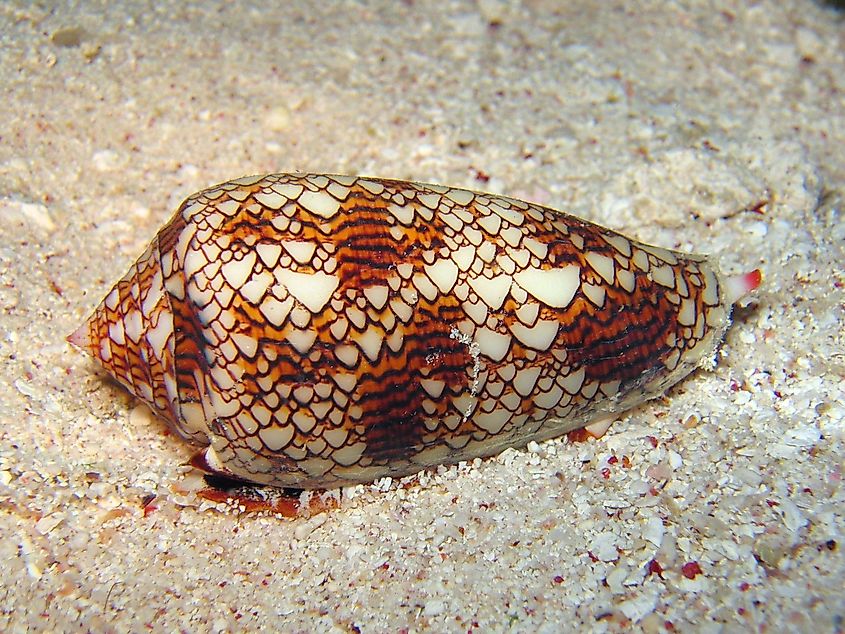
Some species, such as the cone snails, can produce potent venom. The cone snail species use venom via their radula to capture prey. The venom is said to be diverse, with a range of neurotoxins that can affect the nervous system of their prey. Sea snails secrete a white slimy substance as they move. Their slow ripping motion causes them to leave a trail of white mucus as they cover the area they move along. They feel their nearby surroundings using their tentacles to contact objects as they move. As the snail's base wrinkles into small rippling waves, it produces more waves in the mucus layer that it secretes between its bottom and the air.
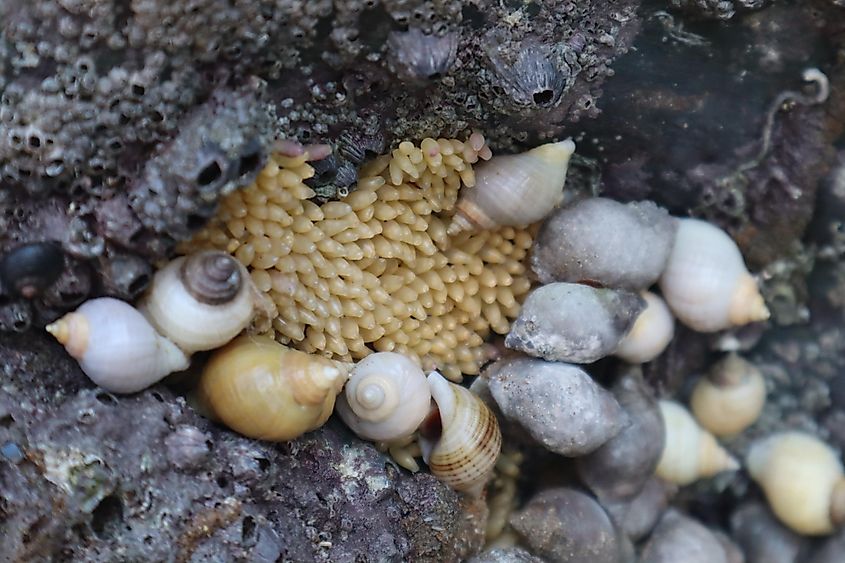
Reproduction in most aquatic snails occurs asexually except in the nerites (genus: Nerita), a female nerite snail makes eggs for males to fertilize. The reproductive strategies in gastropods can vary from one class to another. Some undergo external fertilization, while others undergo internal fertilization. Since most snails are hermaphrodites and can produce eggs and sperm, they can either fertilize themselves or find a mate.
Importance
Sea snails have significant roles in their ecosystems. As part of the marine ecosystem, they are instrumental in maintaining the functioning and balance of oceanic and coastal environments. Their significance extends to ecological, economic, and scientific domains. As indicators of environmental health, sea snails can be used to monitor pollution levels and habitat quality in marine ecosystems.
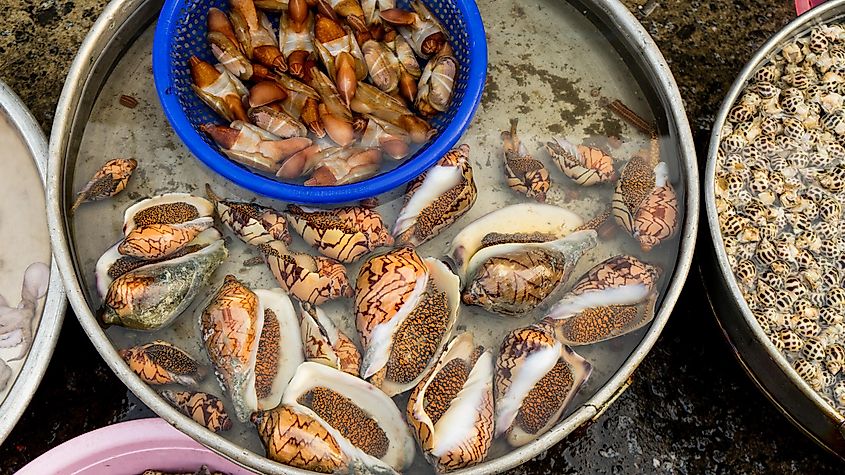
Supporting commercial and recreational fisheries all over the world, sea snails are harvested for their meat, shells, and use in the aquarium industry. Harvesting sea snails creates livelihood opportunities for coastal communities involved in shellfish aquaculture. Serving as food for many animals such as other snails, birds, crabs, fish, and so also humans, they also contribute to unique delicacies in cuisines around the world. The plant-eating varieties (eat algae and debris) and scavenger snails (eat fish food, biofilm, dead fish, algae, dead plants, and detritus) are useful as home fish tank cleaners. The shells provide habitat and protection for other animals and also serve as prized collections for artists, jewelers, and shell collectors worldwide.
The strong and tough teeth made of materials that can withstand high pressures comparable to pressures high enough for diamond formation are being studied for their biological properties to adapt the technology to build better planes, boats, and dental fillings. The venom compounds produced in some species of sea snails are being investigated in the research and development of novel drugs with potential medicinal uses, such as therapeutic and pain-relieving properties. Sea snails continue to serve as model organisms for studying complex biological processes, such as genetics, reproduction, development, and ecology.
Threats
Sea snails, like many other marine organisms, face several threats that jeopardize their populations and overall ecological health. The threats stem from environmental changes to human activities, emphasizing the need for sustainable practices and conservation strategies to protect them.
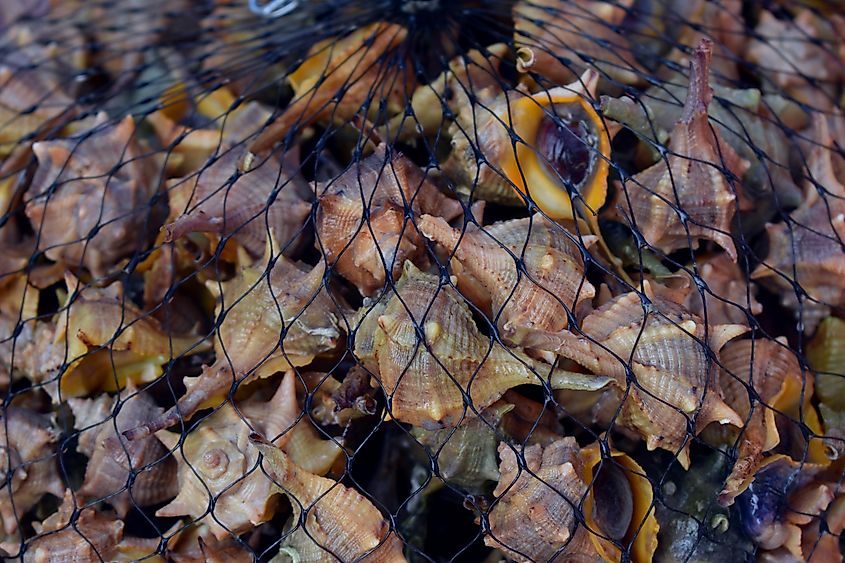
- Habitat destruction is a big threat arising due to pollution, destructive fishing practices, and coastal development, causing the destruction of rocky substrates, seagrass beds, and coral reefs. This loss of habitat impacts sea snail population numbers while also messing with the ecological interactions with other organisms.
- Overfishing is another big problem that impacts sea snail species. Species such as abalones and conches are preferred more than others for their shells and meat. When unsustainable fishing practices, such as lack of regulations and illegal harvesting, operate in certain regions, it can lead to population decline and even local extinction. This imbalance can, in turn, have devastating effects on the overall biodiversity and predator-prey relationships.
- Seabed mining or deep-sea mining is officially responsible for endangering ocean snail species. The scaly-foot snail became the first victim of seabed mining being added in 2019 to the IUCN's Red List of Threatened Species.
- Pollution from marine debris, plastics, and chemical contaminants such as heavy metals, microplastics, and pesticides is another significant threat. The pollutants accumulate in the tissues of these little organisms affecting their reproductive capabilities, triggering improper nutrition, causing internal damage, and affecting their health.
- Climate change resulting in rising ocean temperatures, ocean acidification, and sea-level rise can disrupt their physiological processes, including shell formation and reproduction thus posing a threat to their populations by impacting their survival and reproductive success, leading to population declines.
Dealing with threats needs appropriate conservation measures such as sustainable fishing practices, the establishment of marine protected areas, improved waste management to reduce pollution, and efforts to mitigate climate change. Educating the public and creating awareness about the role of sea snails in marine ecosystems is essential to encourage responsible practices for their preservation.
Sea snails are a diverse group of gastropods found in oceans or marine ecosystems all over the world and are further categorized into many different subclasses, orders, and families depending on their specific genera, species, and many other unique characteristics. Although sea snails face different threats, conservation efforts are crucial to protect their habitats and mitigate the effects of the threats they face. These fascinating creatures are not only ecologically important contributing to nutrient cycling, serving as prey and food for other creatures, and shaping benthic communities but also have a significant ecological, economic, and scientific value.
